Table of content
Chinese vegetable pancakes, known as cài hézi (菜盒子), are a beloved street food and home-cooked delight that blend crispy, golden exteriors with aromatic, savory fillings. These half-moon-shaped parcels are stuffed with a medley of shredded vegetables, tofu, and eggs, seasoned with fragrant spices, and pan-fried to perfection. Whether served as a snack, appetizer, or light meal, they offer a harmonious balance of textures and flavors. This article will guide you through the process of creating authentic cài hézi from scratch, including tips for customization and achieving restaurant-quality results at home.
The Essence of Cài Hézi
Cài hézi translates to “vegetable boxes,” a nod to their crescent shape and vegetable-centric filling. Unlike meat-filled dumplings or spring rolls, these pancakes celebrate the natural sweetness and crunch of fresh produce, making them a vegetarian-friendly favorite. The dish’s origins trace back to northern China, where cold winters necessitated hearty, filling meals that could be prepared with readily available ingredients. Today, cài hézi are enjoyed across the country, with regional variations incorporating local vegetables and spices.
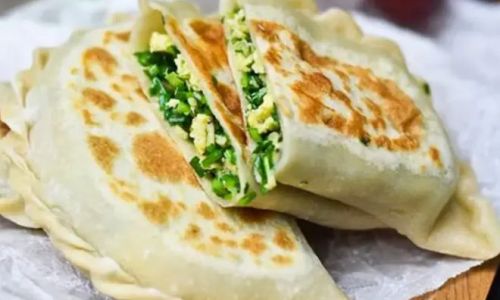
Key Ingredients for Perfect Cài Hézi
Dough
- All-purpose flour (500g): The base of the pancake, providing a neutral canvas for the filling.
- Water (250ml): Use lukewarm water to activate gluten development, ensuring a soft yet elastic dough.
- Salt (1 tsp): Enhances flavor and strengthens the dough’s structure.
- Sesame oil (1 tbsp, optional): Adds a nutty aroma to the dough (can be replaced with vegetable oil).
Filling
- Napa cabbage (300g): Shredded and salted to remove excess moisture, preventing sogginess.
- Carrots (1 medium): Grated for color and sweetness.
- Dried shiitake mushrooms (50g): Rehydrated and chopped for umami depth.
- Firm tofu (200g): Crumbled and lightly sautéed to remove moisture.
- Eggs (2): Scrambled and finely chopped for binding and richness.
- Scallions (4 stalks): Thinly sliced for freshness.
- Ginger (1 tsp, grated): Adds warmth and complexity.
- Soy sauce (2 tbsp): For savory depth.
- Sesame oil (1 tsp): Enhances the filling’s fragrance.
- White pepper (½ tsp): A subtle spicy kick.
- Salt and sugar (to taste): Balances flavors.
Tools
- Mixing bowls
- Rolling pin
- Non-stick skillet or cast-iron pan
- Spatula
- Cheesecloth or kitchen towel (for draining vegetables)
Step-by-Step Preparation
Making the Dough
- Combine flour and salt in a large bowl. Gradually add water while stirring with chopsticks or a fork until a shaggy dough forms.
- Knead the dough on a lightly floured surface for 8–10 minutes until smooth and elastic. The dough should feel springy and bounce back when pressed.
- Rest the dough: Shape it into a ball, coat lightly with oil, and cover with a damp cloth. Let it rest for 30–60 minutes. This relaxes the gluten, making the dough easier to roll.
Preparing the Filling
- Salt the cabbage: Toss shredded cabbage with 1 tsp salt and let it sit for 15 minutes. Squeeze out excess moisture using cheesecloth or your hands.
- Sauté aromatics: Heat 1 tbsp vegetable oil in a pan. Add ginger and scallions, stir-frying until fragrant (30 seconds).
- Cook tofu and mushrooms: Add crumbled tofu and chopped mushrooms. Stir-fry for 2–3 minutes until lightly browned. Remove from heat and let cool.
- Combine ingredients: In a large bowl, mix cabbage, carrots, tofu mixture, scrambled eggs, soy sauce, sesame oil, white pepper, salt, and sugar. Adjust seasoning to taste.
Assembling the Pancakes
- Divide the dough: Cut the rested dough into 12 equal pieces. Roll each into a ball.
- Roll out wrappers: Flatten a dough ball with your palm, then use a rolling pin to shape it into a thin, 8–10 cm circle. Keep unused dough covered to prevent drying.
- Fill and seal: Place 2–3 tbsp of filling on one half of the wrapper. Fold the dough over to form a half-moon, pressing the edges to seal. Use a fork to crimp the edges for a decorative finish.
Cooking the Pancakes
-
Pan-frying (traditional method):
- Heat 2 tbsp vegetable oil in a non-stick skillet over medium heat.
- Place pancakes in the pan, working in batches to avoid overcrowding.
- Fry for 2–3 minutes per side until golden brown. Reduce heat if the edges darken too quickly.
- Drain on paper towels to remove excess oil.
-
Baking (healthier alternative):
- Preheat oven to 375°F (190°C).
- Brush pancakes lightly with oil and bake on a parchment-lined tray for 15–20 minutes, flipping halfway.
-
Air-frying (crispiest texture):
- Preheat air fryer to 375°F (190°C).
- Lightly oil pancakes and cook for 10–12 minutes, flipping once, until crisp.
Tips for Perfect Cài Hézi
- Dough consistency: If the dough feels sticky, add flour 1 tbsp at a time. If too dry, sprinkle water.
- Filling moisture: Overly wet fillings cause soggy pancakes. Always drain vegetables thoroughly.
- Even cooking: Maintain medium heat to ensure the dough cooks through without burning.
- Freezing: Uncooked pancakes can be frozen on a tray, then transferred to a freezer bag. Fry directly from frozen, adding 2–3 minutes to cooking time.
Creative Variations
- Spicy twist: Add 1–2 tbsp chili oil or Sichuan peppercorns to the filling.
- Seafood upgrade: Mix in chopped shrimp or scallops with the vegetables.
- Gluten-free option: Use rice flour or a 1:1 blend of rice and tapioca flour for the dough.
- Vegan filling: Substitute tofu with seasoned TVP (textured vegetable protein) or finely chopped mushrooms.
Serving Suggestions
- Dipping sauces: Pair with black vinegar, soy sauce, chili oil, or a garlic-ginger sauce.
- Side dishes: Serve alongside pickled vegetables, congee, or a light cucumber salad.
- Brunch spread: Include cài hézi in a dim sum-style brunch with dumplings, steamed buns, and tea.
The Cultural Significance of Cài Hézi
Cài hézi are more than just a meal—they embody resourcefulness and community. Historically, families would gather to make large batches during festivals or harvest seasons, with each member assigned a task. Today, they remain a symbol of home-cooked comfort, often shared at gatherings or packed as lunches. Their versatility also reflects Chinese culinary philosophy, where simplicity and balance reign supreme.
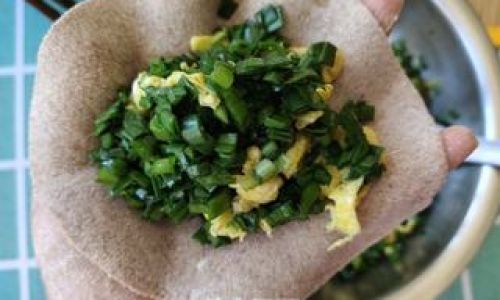
Troubleshooting Common Issues
- Tough dough: Overkneading or insufficient resting time. Let the dough relax longer.
- Filling leaks: Inadequate sealing or overstuffing. Use a fork to crimp edges tightly.
- Soggy pancakes: Excess moisture in the filling. Ensure vegetables are thoroughly drained.
- Uneven browning: Inconsistent heat. Rotate the pan while cooking.
Conclusion
Mastering cài hézi is a rewarding journey that celebrates texture, flavor, and tradition. With practice, you’ll learn to balance the dough’s elasticity, the filling’s seasoning, and the cooking technique’s precision. Whether enjoyed piping hot from the skillet or packed for a picnic, these vegetable pancakes offer a taste of China’s culinary heritage. Experiment with fillings, sauces, and cooking methods to make the recipe your own—and don’t forget to share them with loved ones, as food tastes best when shared.
By following this guide, you’ll not only recreate a classic dish but also honor the artistry and patience inherent in Chinese home cooking. Cài hézi are a testament to the beauty of simplicity, proving that with a handful of ingredients and care, extraordinary meals can emerge from any kitchen.
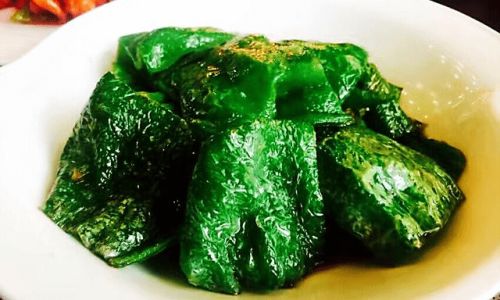
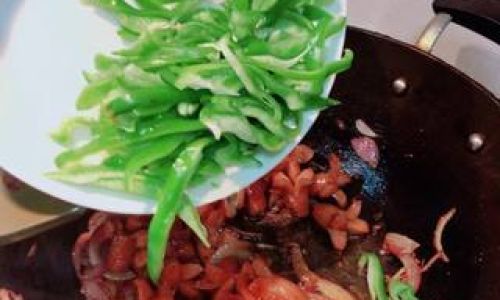
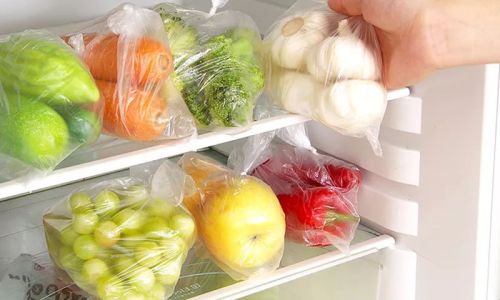
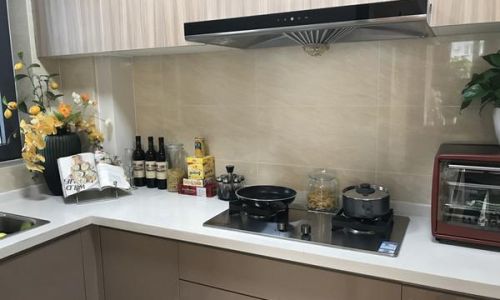
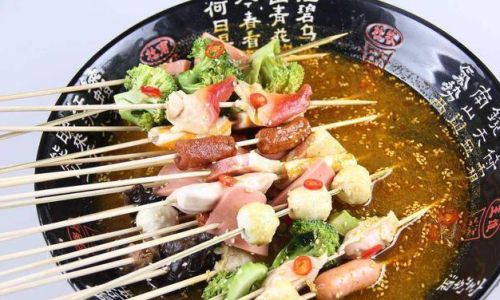
0 comments